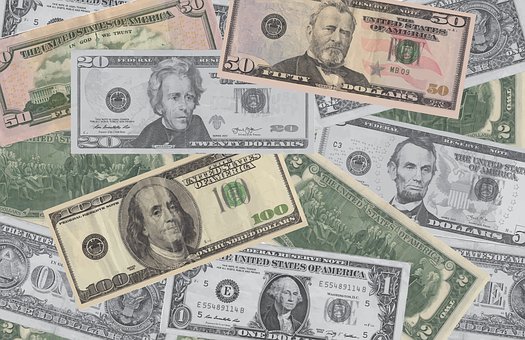 The U.S. dollar declined steeply on Thursday, falling to its lowest level in over a month after the Federal Reserve made comments that dampened expectations for an interest rate cut in the near term. At the last policy meeting of the year, the Fed kept interest rates stable, between 1.50 percent and 1.75 percent.
The U.S. dollar declined steeply on Thursday, falling to its lowest level in over a month after the Federal Reserve made comments that dampened expectations for an interest rate cut in the near term. At the last policy meeting of the year, the Fed kept interest rates stable, between 1.50 percent and 1.75 percent.
As of 1:37 p.m. HK/SIN, the dollar index was down 0.33 percent to 97.09, with the dollar weakening against all of its trading partners. The British pound gained 0.12 percent against the greenback, to trade at $1.3208. The euro was up 0.08 percent to $1.1137, and the Australian dollar also gained 0.09 percent against the greenback to $0.688.
Analysts were expecting a more hawkish Fed statement, which is not what Federal Reserve Chairman Jerome Powell provided yesterday. He commented that the economic outlook in the U.S. was favorable. He forecast only moderate growth in the next two calendar years, and a majority of Fed members expecting that interest rates will remain unchanged until at least 2021. The minority 4 Fed members who do expect a future rate change predict one interest rate hike sometime in 2020. The Fed also expects unemployment rates to remain near their current historic lows until at least after the U.S. presidential election in November 2020.
U.S. stocks rallied after the Fed announcement, with all three Wall Street benchmark indexes closing higher, though they were unable to recoup their losses from Tuesday’s trading session. Asian markets were mixed on Thursday afternoon, with Australia’s ASX 200 down 0.65 percent and the Shanghai Composite down 0.19 percent. All other major benchmarks were higher, with the gains led by South Korea’s Kospi that surged 1.46 percent. Hong Kong’s Hang Seng Index gained 1.35 percent. Japan’s Nikkei 225 gained 0.14 percent.
Up Ahead
Thursday is expected to be a very volatile day for the markets, as Britain goes to the polls in a vote that is expected to determine the fate of Brexit. A Conservative victory is predicted, though polls have gotten close in recent days, so a surprise outcome is possible.
With just a few days left before Sunday’s trade deadline between the U.S. and China, U.S. President Trump is also expected to meet with his top trade advisors and to determine whether or not the upcoming round of tariffs will really go into effect, or whether he will delay implementation in the hopes for a deal.
Finally, the first policy meeting of the European Central Bank under the leadership of Christine Lagarde will be completed today, and analysts are eager to hear her first post-meeting announcement and her tone for market expectations.
